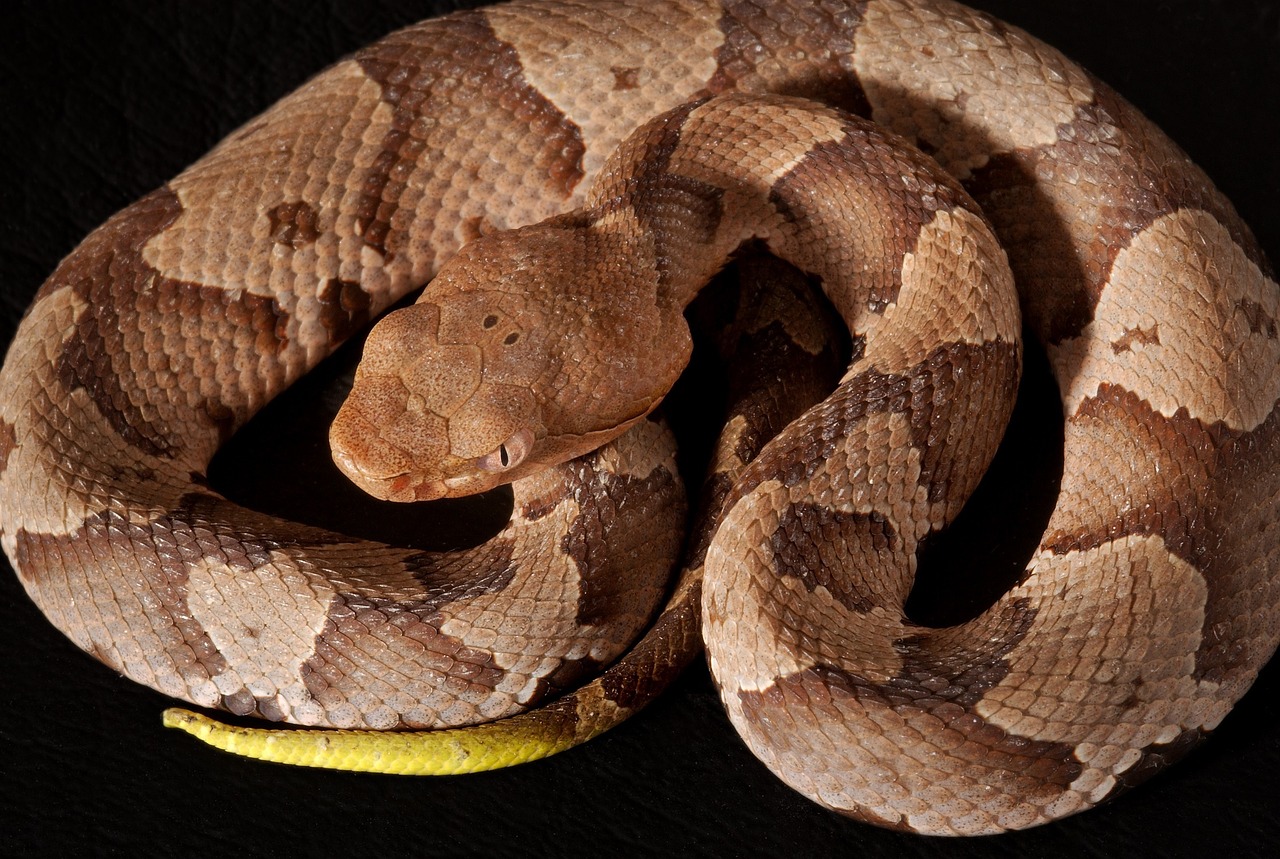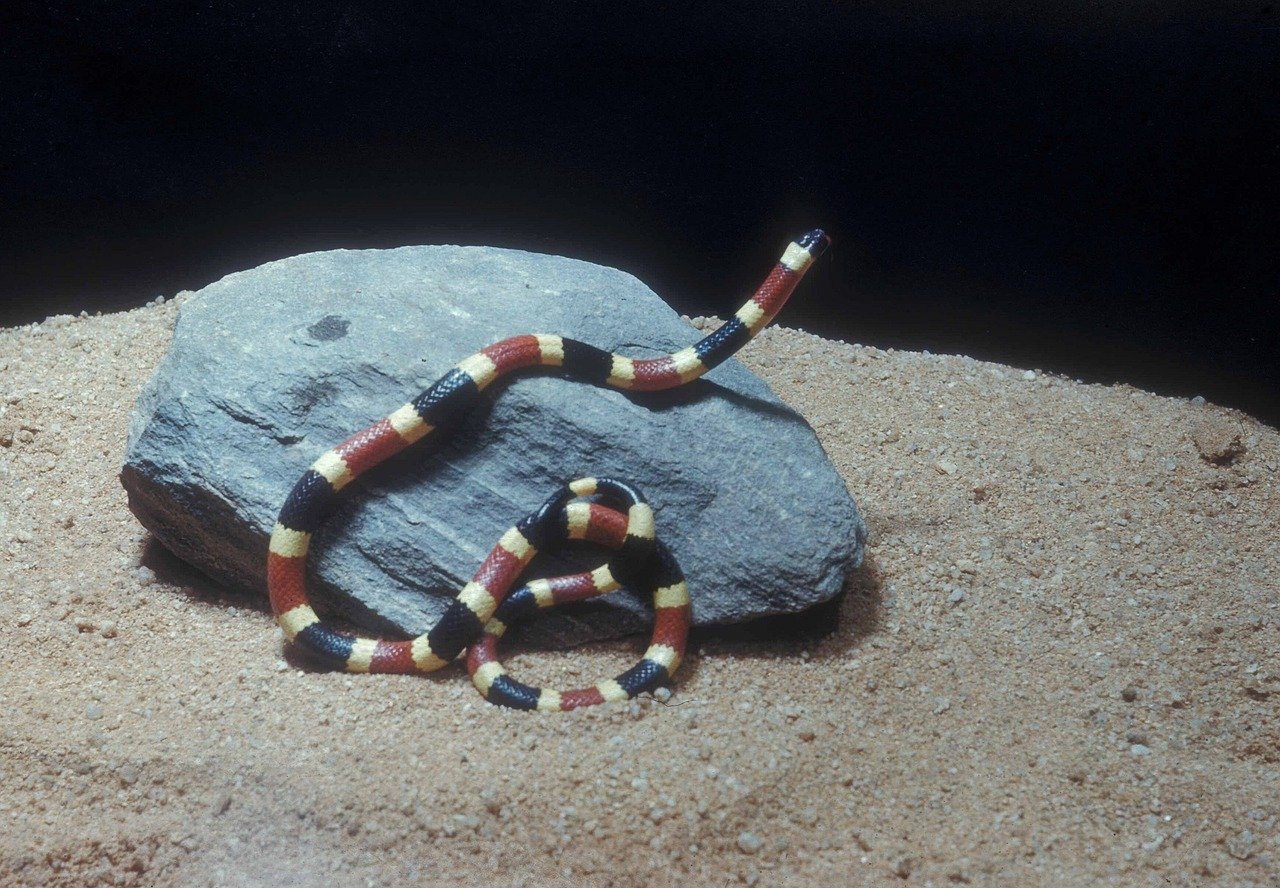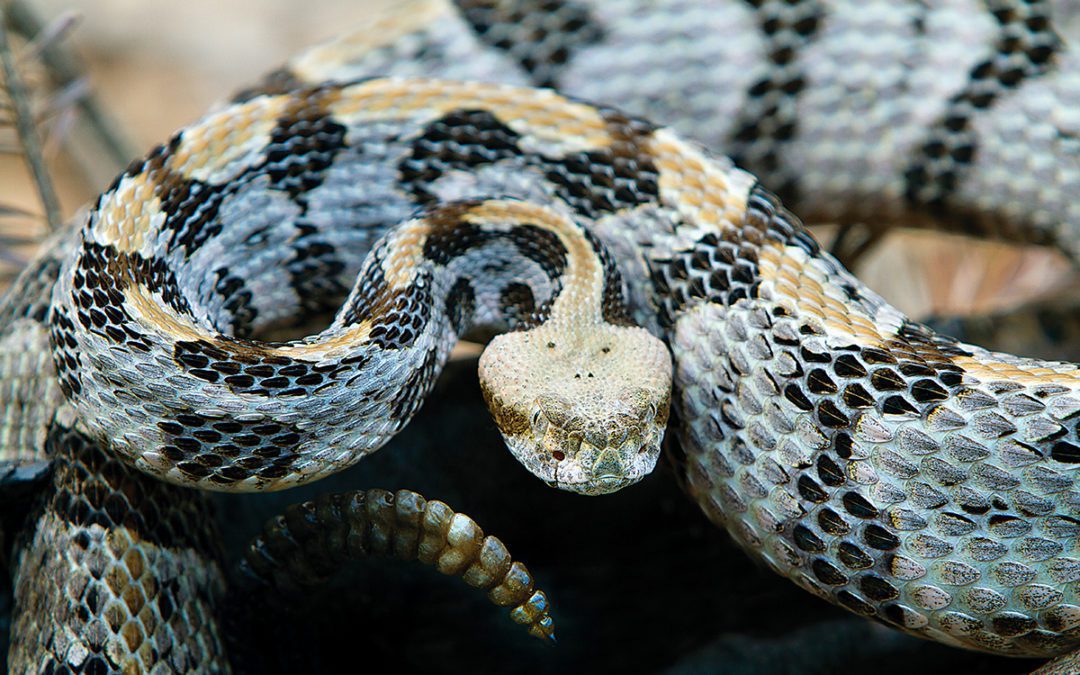When it comes to gundogs and snakes, know your enemy and be prepared.
For many of us, September means the first hunting of the season: doves, teal, prairie grouse. September also means warm if not downright hot weather—and the need to be aware of the health risks these conditions pose for your four-legged companion. Avoiding heat stress commands most of the attention, and justifiably so. But there’s another risk associated with the early part of the season, one that’s less ubiquitous but if anything more acutely threatening: the risk that your dog may be bitten by a venomous snake.
First, let’s clear up a point of terminology. While certain snakes are often described as “poisonous,” that’s technically incorrect. The toxins of poisonous animals are either secreted onto their skin or contained in their flesh, meaning they make you sick when you touch or eat them.
Snakes, along with other creatures that transmit their toxins via a bite or sting—scorpions, wasps, hornets, etc.—are classified as venomous. Not that the distinction matters much if you’re on the receiving end, but now you know.
By any name, at least one species of venomous snake is (or was) native to all 48 of the contiguous United States. These species fall into two broad categories, by far the larger of which is the pit vipers. This includes the rattlesnakes, of which there are about 30 species; the water moccasin, or cottonmouth; and the copperhead. The other category, the elapids, is represented in North America by three species of coral snakes.

Venomous pit vipers include the rattlesnakes, of which there are about 30 species; the water moccasin, or cottonmouth; and the copperhead (shown).
While the coral’s venom is highly toxic, it’s such a reclusive critter that far less than one percent of the human snakebite cases reported in the U.S. are attributed to it. Although no reliable data exists on the number of canine snakebites, it’s reasonable to infer that dogs are bitten by coral snakes at a comparatively low rate.
So while much of what follows applies to venomous snakes of any stripe, by-and-large it’s the pit vipers that dog owners need to be most concerned about.
The term “pit viper,” by the way, derives from the prominent pit-like cavities located between the snake’s eyes and nostrils. The site of heat-sensing organs known as thermoreceptors, they’re the technology that enables them to hunt in the dark. Triangular heads, elliptical pupils, and retractable fangs are other characteristics shared by the pit viper clan.
The venom of all pit vipers is a complex cocktail of enzymes, proteins, and polypeptides whose primary purpose is to immobilize prey animals and break down their tissues. Most venoms are also hemotoxic, attacking the vascular walls and essentially causing the victim to bleed out internally; indeed, most snakebite deaths in the United States (in humans, I mean) result from cardiac arrest triggered by extremely low blood volume. The venoms of some pit vipers, notably the Mojave rattlesnake, also have neurotoxic properties, disrupting the function of the nervous system.
Not coincidentally, the venom of the Mojave rattler is the most toxic of all the North American pit vipers; the least toxic, by far, is the copperhead. This helps explain why copperheads, despite biting more Americans than any other venomous snake, account for very few deaths. The deadliest snake in North America, statistically, is the western diamondback.
The baseline toxicity of the venom, however, doesn’t tell the whole story. It’s just one of several factors that influence the severity and progression of a given snakebite “episode,” the clinical response to it, and the prognosis for recovery.
Dr. Michael Peterson of the Reid Animal Hospital in Albany, Oregon, is one of the country’s leading authorities on the diagnosis and treatment of canine snakebites. Every sportsman’s first line of defense, he stresses, should be a working knowledge of the venomous snakes that your dog may encounter where you plan to hunt.
“It’s imperative that you know which species of venomous snakes are present, what habitats they prefer (so you can avoid them if possible), and what kind of ‘personalities’ they have,” Peterson says. “Most snakes are fairly passive, but a few, like the southern Pacific rattlesnake, can be very aggressive. And while many states have only one or two species you need to be concerned about, if you’re hunting quail in parts of southern California or Arizona there could be as many as eight species you need to be aware of.”

Although no reliable data exists on the number of canine snakebites, it’s reasonable to infer that dogs are bitten by coral snakes at a comparatively low rate.
Dr. Peterson is a huge believer in “snakeproofing”—the process of teaching dogs to avoid any snakes they encounter by scent, sight and even sound (the angry buzz of a rattler, for example). He acknowledges that it’s not a panacea, however.
“You can’t eliminate all the risk,” he says. “If your dog’s running full-tilt downwind, he may bump into a snake before he senses it’s there. The good news is that this kind of encounter typically results in a defensive bite that tends to be less severe, or even a ‘dry bite,’ in which the snake releases no venom at all.
“A dog that hasn’t been snakeproofed, on the other hand, may try to actively engage with a snake. This is likely to result in an offensive strike that’s more serious.”
The worst strikes of all, Peterson adds, are “agonal” strikes, made when the snake is literally in its death throes, or even technically dead.
“The severed head of a rattlesnake,” he explains, “can still strike out of reflex for up to an hour and a half. And when it does, it pumps out all the venom it has left.”
But while the amount of “envenomation” is a critical variable in the snakebite equation, it’s one that’s literally impossible to evaluate in the field. Nor is the amount of swelling a reliable indicator of the severity of a bite. A relatively mild bite can result in significant swelling (bites to the head and face typically fall into this category), while a very serious bite can show little or no swelling.
“The bite of a Mojave rattlesnake, the most venomous snake in North America, can look like a simple puncture wound,” Peterson emphasizes. “Because you simply never know, the biggest take-home message is that if your dog’s been struck by a venomous snake, don’t second-guess. Drop everything and get him to a veterinary facility as fast as you can.
“That’s why I tell people that the only ‘snakebite kit’ they need is their car keys. There’s nothing you can do in the field that will improve your dog’s outcome. You just need to keep calm and get him to the vet.”
This brings up the so-called “rattlesnake vaccine,” one of the most hotly debated topics among veterinarians who deal with canine snakebites. Manufactured by a company called Red Rock Biologics, it stimulates the production of antibodies that help neutralize the effects of some venoms. The company’s promotional material states that the vaccine is most effective against the western diamondback rattlesnake (the snake from whose venom the vaccine is derived) and may—repeat, may—provide protection against the bites of several other species of rattlers, as well as the copperhead.
All well and good, and I know a lot of serious dog guys—Texas quail hunters, for example—who swear by the stuff. (I have my own dog vaccinated every summer before we head to the Great Plains for prairie grouse, on the theory that it’s cheap insurance.) The problem some vets have is that there’s virtually no hard data to support the manufacturer’s claims.
“I won’t say you shouldn’t use it,” says Peterson. “It appears to be safe, it’s relatively inexpensive, and it may moderate the symptoms of bites from certain species of snakes. So in that respect, it may buy you some time if your dog is bitten. But because the level of protection the vaccine provides is ultimately unknown, it’s still vitally important that you get your dog to a veterinarian as quickly as possible.”
While some vets concoct their own snakebite “remedies” from various mysterious ingredients—eye of newt, toe of frog—antivenin remains the only specific antidote. Many dogs are treated successfully without it, depending on how they clinically “present” and on the experience of the attending veterinarian. The bottom line, though, is that the antivenin option needs to be available.
With this in mind—and with antivenin having become vastly more affordable in the past few years—Peterson suggests that it may make sense for hunters who travel extensively to pool their resources and invest in a vial or two. Not so they can administer it, but so that a vet can if it comes to that. Even in areas where snakes are common, he notes, antivenin is not something every veterinary clinic routinely keeps on hand.
So, if you’ll pardon a little mash-up of the Bible and the Boy Scouts: Know thine enemy—and Be Prepared.
This is a facsimile reprint of the very first Boy Scouts Handbook published in 1911. Scouts past and present will be fascinated to see how scouting has changed, as well as what has stayed the same over the years.





